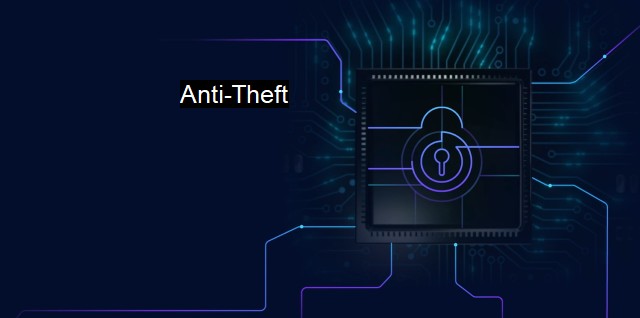What is Anti-Theft?
Ensuring Cybersecurity: The Increasing Demand for Anti-Theft Solutions in the Age of Innovation
Antivirus, and digital protection, the term "anti-theft" has morphed to denote a handful of strategies and technologies that have been intricately designed to counteract unauthorized access, manipulation, and theft of digital information and resources. The intensity and complexity of cyber threats have grown alongside technological advancements, necessitating more elaborate and stronger digital security frameworks. Anti-theft software acts as one such critical component that aids in the prevention, detection, and redressal of cyber thefts, safeguarding businesses and individuals against potential losses.Notably, in the world of digital anti-theft, the traditional idea of theft translates into offenses like identity theft, data breaches, unauthorized access, phishing, financial frauds, among others. These illicit activities technically involve 'stealing' information or 'hacking' into personal or business networks and systems, thereby equally harmful, if not more, as physical theft.
Anti-theft software typically works as an integral portion of a larger security suite that includes factors like antivirus and firewall protections. Its primary function is to thwart unauthorized access or use of digital properties, bolstering the impregnable shield against hostile encroachments amidst growing Internet-based threats. This tool is also critical in tracking or locating stolen digital gadgets utilizing the built-in GPS, observing and logging unauthorized activities, and issuing alerts or initiating preventive actions when an intrusion gets detected.
The anti-theft technology users can manage their data safely, exercise control over how and where their data is accessible, and enable restrictions for data misuse. Users can erase sensitive data remotely if their device gets lost or stolen, ensuring their privacy remains uncompromised. Characteristics like failed login attempt counts, backup and synchronization features, remote access and control, customized trigger alerts, identifying potential thieves through their image capturing and recording of keystrokes, form key components of anti-theft mechanisms.
In several instances, antivirus software and anti-theft technology are bundled together within cybersecurity solutions given their complementary roles. Antivirus software primarily protects the system from malicious software like viruses, worms, trojans, and other malware threatening to harm or compromise the system's integrity, confidentiality, and availability. The anti-theft territory, on the other hand, is mainly about protecting data present in the system or transmitted over the networks. Thereby when integrated, antivirus and anti-theft software can offer an all-rounded shield against diverse types of cyber threats.
Understanding the anti-theft mechanisms and using them efficiently assumes more importance today as cybercrimes continue to be a prevailing problem with all the increased online interactions and transactions. Various anti-theft and antivirus solutions are readily available in the market, fitting all sizes and types of users - from individual users concerned about personal data and privacy, small businesses operating with limited resources, to large companies dealing with tremendous amounts of sensitive data.
While implementing anti-theft solutions fundamentally focuses on safeguarding from potential cyber threats, the aftermath of theft also necessitates adequate attention. Upon detecting a theft, an ideal anti-theft software target providing insights about the identity of the thief and steps towards recovery, also supports necessary legal actions. Thus, anti-theft within the ambit of cybersecurity doesn't stand solely for prevention policies but also stretches to include a broader spectrum of detection and recovery mechanisms.
To sum up, anti-theft in the virtual world works towards proactively preventing cyber thefts, optimizing security configurations in line with threat patterns and intrusion tactics, fostering a culture of cybersecurity cognizance, and managing post-incident consequences, towards seamless digital experiences. The shared assembly of antivirus and anti-theft components within cybersecurity applications ensures a more comprehensive, inclusive, and robust network and data protection procedure that extends beyond the traditional scopes to adequately lock out advanced technological misfeasance and malfeasance. Consequently, it establishes an encompassing safety net in today's hyper-connected digital reality ridden with constant cyber threats.

Anti-Theft FAQs
What is anti-theft software?
Anti-theft software is a type of cybersecurity solution that helps prevent theft or unauthorized access to devices or data. It can track, lock, or wipe data from a stolen or lost device.How does anti-theft software work?
Anti-theft software works by using GPS, Wi-Fi, or cellular network signals to locate a lost or stolen device. It also allows the owner to remotely wipe data, lock the device, or trigger an alarm. Some anti-theft software can even take a photo of the thief and send it to the owner's email.Can anti-theft software protect my device against malware?
While anti-theft software can help prevent physical theft or unauthorized access to a device, it may not protect against malware infections. To protect your device from malware, you should install a reputable antivirus software and keep it updated.Do I need to pay for anti-theft software?
Many anti-theft software programs offer free versions with basic features such as device tracking and remote locking. However, if you want more advanced features such as photo capture, remote wipe, or SIM change notification, you may need to upgrade to a paid version. It's important to choose a reliable and reputable anti-theft software and read the terms and conditions carefully before installing it.Related Topics
Data Encryption Password Management Two-Factor Authentication Firewall Protection Malware Detection and Removal
| | A | | | B | | | C | | | D | | | E | | | F | | | G | | | H | | | I | | | J | | | K | | | L | | | M | |
| | N | | | O | | | P | | | Q | | | R | | | S | | | T | | | U | | | V | | | W | | | X | | | Y | | | Z | |
| | 1 | | | 2 | | | 3 | | | 4 | | | 7 | | | 8 | | |||||||